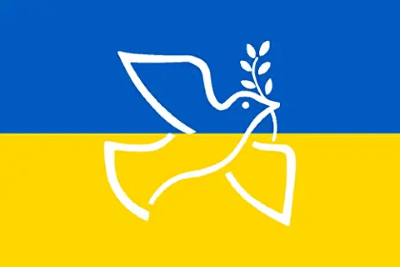Prevalence of burnout syndrome in military personnel at the National Geographic Institute of Peru
Abstract
Objective:The study aimed was to investigate the prevalence of burnout syndrome and to identify the main factors associated with it.
Method: The Maslach Burnout Inventory - Human Services Survey (MBI-HSS) instrument was applied, using a validated version in Spanish; previously the COPE-28 instrument.
Results: The results determined that the association between age and emotional exhaustion is (0.231) for those under 40 years of age; while for those over 40 years of age it is (0.751); age and stress perception (0.205) for those under 40 years of age and (0.858) for those over 40 years of age; age and depersonalization are (0.244) and (0.757) for under and over 40 years respectively; grade and emotional exhaustion were (0.151) for officers and (0.720) for supervisors, technicians, and NCOs; between grade and perception of stress was (0.832) for officers and (0.110) for supervisors, technicians, and NCOs.
Conclusion: The observational-analytical study model applied in the military of the Lima Metropolitana Region was not satisfactory, in synergy with the working hours and high levels of professional responsibility in the context of COVID-19, which interfere in the relationship between the military and the communities.
Downloads
-
Abstract1803
-
PDF (Español (España))1394
-
PDF1394
References
Saborío Morales L & Hidalgo Murillo, LF. Síndrome de Burnout. Medicina. pierna. Costa Rica. 2015;32(1):119-124. Disponible en: http://www.scielo.sa.cr/scielo.php?script=sci_arttext&pid=S1409-00152015000100014&lng=en.
Youssef F. Medical Student Stress, Burnout and Depression in Trinidad and Tobago. Academic psychiatry: the journal of the American Association of Directors of Psychiatric Residency Training and the Association for Academic Psychiatry. 2016;40(1):69-75. Disponible en: https://dx.doi.org/10.1007/s40596-015-0468-9
Valenzuela Narváez DR & Gayoso Cervantes M. Estrés laboral y su correlación con la prevalencia de dispepsia funcional en militares en actividad que acudieron al hospital geriátrico del ejército. Rev Gastroenterol Peru. 2017;37(1):16-21. Disponible en: http://www.scielo.org.pe/pdf/rgp/v37n1/a03v37n1.pdf
Hernández García TJ. Burnout en médicos de un hospital del sector público en el Estado de Hidalgo. Agricultura, sociedad y desarrollo. 2018;15(2):161-172. Disponible en: http://www.scielo.org.mx/scielo.php?script=sci_arttext&pid=S1870-54722018000200161&lng=es&tlng=es
Lanti R & Martínez M. Flexión compuesta esviada en secciones de hormigón armado. Aproximación numérica. Informes de la Construcción. 2020;72(558): e338. Disponible en: https://doi.org/10.3989/ic.69148
Malander N. Síndrome de Burnout y Satisfacción Laboral en Docentes de Nivel Secundario. Ciencia & Trabajo. 2016;18(57):177-182. Disponible en: https://scielo.conicyt.cl/pdf/cyt/v18n57/0718-2449-cyt-18-57-00177.pdf
Maguiña Vargas C. Reflexiones sobre el COVID-19, el Colegio Médico del Perú y la Salud Pública. Acta Médica Peruana. 2020;37(1):8-10. Disponible en: https://dx.doi.org/10.35663/amp.2020.371.929
Banco Interamericano de Desarrollo. Trasfondo regional y pilares conceptuales. 2020. Disponible en: https://publications.iadb.org/publications/spanish/document/ALC-Post-COVID-19-Retos-y-oportunidades-para-CSC.pdf
Veiga de Cabo J, Fuente Díez E & Zimmermann Verdejo M. Modelos de estudios en investigación aplicada: conceptos y criterios para el diseño. Medicina y Seguridad del Trabajo. 2008;54(210):81-88. Disponible en: http://scielo.isciii.es/scielo.php?script=sci_arttext&pid=S0465-546X2008000100011&lng=es&tlng=es
Gilla MA, Giménez SB, Moran VE & Olaz FO. Adaptación y validación del Inventario de Burnout de Maslach en profesionales argentinos de la salud mental. Liberabit. 2019;25(2):179-193. Disponible en https://dx.doi.org/10.24265/liberabit.2019.v25n2.04
Morán C, Landero R & González MT. COPE-28: un análisis psicométrico de la versión en español del Brief COPE. Universitas Psychologica. 2009;9(2):543-552. Disponible en: http://pepsic.bvsalud.org/scielo.php?script=sci_arttext&pid=S1657-92672009000200020&lng=pt&tlng=es
Maslach C & Jackson S. La medición del burnout experimentado. J Comportamiento de la ocupación. 1981;2(2):99-113. Disponible en: https://dx.doi.org/10.1002/job.4030020205
Alves JSC, Bendassolli PF & Gondim SMG. Trabajo emocional y burnout: un estudio con policías militares. Avances En Psicología Latinoamericana. 2017;35(3):459-472. Disponible en: https://doi.org/10.12804/revistas.urosario.edu.co/apl/a.4505
Lima C, Sepúlveda J, Lopes P, Fajardo H, Sousa MM, Ferreira MC, Olsen P, Barbosa R, Mendes N & Jácome G. Prevalence of burnout syndrome among military physicians at a public hospital in Rio de Janeiro, Brazil. Revista brasileira de medicina do trabalho. 2018;16(3):287-296. Disponible en: https://doi.org/10.5327/Z1679443520180297
Magalhães E, Oliveira ACMS, Gouvêia CS, Ladeira LCA, Queiroz DM & Vieira CV. Prevalência de síndrome de burnout entre os anestesiologistas do Distrito Federal. Rev Bras Anestesiologia. 2015;65(2):104-110. Disponible en: https://dx.doi.org/10.1016/j.bjane.2013.07.016
Packham C. Medscape National Physician Burnout and Depression Report. 2018. Disponible en: https://www.medscape.com/slideshow/2018-lifestyle-burnout-depression-6009235.
Carlotto MS & Palazzo LS. Síndrome de burnout e fatores associados: um estudo epidemiológico com professores. Cadernos de Saúde Pública. 2006;22(5):1017-1026. Disponible en: https://dx.doi.org/10.1590/S0102-311X2006000500014
Silva DKC, Pacheco MJT, Marques HS, Branco RCC, Silva MACN & Nascimento MDSB. Burnout no trabalho de médicos pediatras. Revista brasileira de medicina do trabalho. 2017;15(1):2-11. Disponible en: https://www.rbmt.org.br/details/208/pt-BR/burnout-no-trabalho-de-medicos-pediatras
Pereira SM, Teixeira CM, Carvalho AS & Hernández Marrero P. Compared to Palliative Care, Working in Intensive Care More than Doubles the Chances of Burnout: Results from a Nationwide Comparative Study. PLoS uno. 2016;11(9):e0162340. Disponible en: https://dx.doi.org/10.1371/journal.pone.0162340
Rizo Baeza M, Mendiola Infante SV, Sepehri A, Palazón-Bru A, Gil Guillén VF & Cortés-Castell E. Síndrome de burnout en enfermeras que trabajan en unidades de cuidados paliativos: un análisis de factores asociados. J Nurs Manag. 2018;26(1):19-25. Disponible en: https://dx.doi.org/10.1111/jonm.12506
Fernández Sánchez JC, Pérez Mármol JM & Peralta Ramírez MI. Influencia de factores sociodemográficos, laborales y de estilo de vida sobre los niveles de burnout en personal sanitario de cuidados paliativos. Anales Sis San Navarra. 2017;40(3):421-431. Disponible en: http://scielo.isciii.es/scielo.php?script=sci_arttext&pid=S1137-66272017000300421&lng=es.
The works published in this magazine are subject to the following terms:
1. The Publications Service of the University of Murcia (the publisher) preserves the copyright of the published works, and encourages and allows the reuse of the works under the license for use stated in point 2.
© Servicio de Publicaciones, Universidad de Murcia, 2011 (© Publications Service, University of Murcia, 2011)
2. The works are published in the electronic edition of the journal under Creative Commons Reconocimiento-NoComercial-SinObraDerivada 3.0 España(texto legal) “ a Attribution-NonCommercial-NoDerivatives 3.0 Spain license (legal text)”. They can be copied, used, broadcasted, transmitted and publicly displayed, provided that: i) the authorship and original source of their publication (journal, publisher and URL) are cited; (ii) are not used for commercial purposes; iii) the existence and specifications of this license is mentioned.
3. Conditions of self-archiving. Authors are allowed and encouraged to electronically disseminate the pre-print (pre-reviewed ) and / or post-print (reviewed and accepted for publication) versions of their works prior to publication, as it ensures a wider circulation and dissemination which may lead to a possible increase in its mention and a higher scope among the academic community. RoMEO color: green.













